Csepel Island joined the capital administratively only when Greater Budapest was established. It developed in separate ways before that. Since then, only two bridges connect it to the other districts: the Kvassay and the Gubacsi Bridge. However, there is no crossing to Buda. Although we are already close to the 11th District connection, it will definitely take a few more years to get it up and running.
It is easy to imagine that Csepel will be the "bezzeg district" of the coming years. A promenade and a park have been set up on the banks of the Ráckeve-Danube, which is also worth a visit for every citizen of Budapest at least once. Pestbuda already reviewed the topic in several articles, but now in the summer, the Ráckeve-Danube bank in Csepel is definitely worth a visit.
.jpg)
Bird's-eye view of Daru (Crane) Hill (Photo: Dávid Palotás/pestbuda.hu)
It is worth approaching by car from Dunadűlő Street, where it is easier to find parking spaces between the panel houses. Visitors should park their car right at the beginning and continue on foot. Out of the BKK (Centre for Budapest Transport) routes, it is obvious to use the suburban railway lines (HÉV - helyiérdekű vasút) going from the city centre to Csepel, but if travellers want to get off the buses directly at the promenade, it is worth taking buses 71 and 152. It is easy to get here by bicycle as the cycling lane is built almost all the way.
An enormous monument with a smaller hill appears right at the beginning, that is Daru Hill. The group of sculptures of our ancestors forms three full-length sculptures: Álmos, Árpád, and István come to life with contemporary uniform and an obelisk-like wooden work from afar. The hill highlights the grandiose nature of the several-metre-high statues.
There is also a huge Hungarian flag a few tens of metres away from the statue. It can be seen from farther than the red striped Csepel Water Tower, which is the tallest water tower in Hungary.
.jpg)
The national flag, in the background the Daru Hill (Photo: Dávid Palotás/pestbuda.hu)
Not far from the group of statues is one of the favourite places of local young people, the skate park and the BMX course, but there is also a fitness park. Walking ashore, visitors are greeted by a beautiful promenade named after György Kolonics, perhaps the most famous Hungarian canoeist.
The very sophisticated viacolor pavement of the coast fits perfectly with the reed-sedge vegetation. The shoreline is sometimes a terraced hillside planted with ornamental plants. The coastal promenade stretches for several kilometres to the south, but it is worth walking along mainly because the end holds a small surprise or even two!
.jpg)
A typical detail of the Kolonics promenade (Photo: Dávid Palotás/pestbuda.hu)
But staying on the promenade, walkers can find fishing places, a pier in memory of György Kolonics, and tracks designed for various sports.
.jpg)
A pleasant fishing spot (Photo: Dávid Palotás/pestbuda.hu)
There is also a dog park on the shore and several public toilets. The slide on the shore is also particularly creative.
.jpg)
Riverslide slide for children (Photo: Dávid Palotás/pestbuda.hu)
As visitors head south, the South-Pest Sewage Treatment Plant consisting of several domes, appear on the other side of Soroksár, but unpleasant odours cannot be noticed.
A gem, the Little Danube Bay, can be reached after about a kilometre and a half. An arched wooden bridge leads through that.
.jpg)
The beautifully arched wooden bridge on the promenade (Photo: Dávid Palotás/pestbuda.hu)
If visitors look at the bay from here, they can see swamp turtles and even otters on the protruding trees. The sound of marsh warblers and song thrushes is also pleasant, but fortunately, the frogs also indicate the rich fauna. Of course, as is customary in such places, an educational trail introduces the characteristics of the habitat.
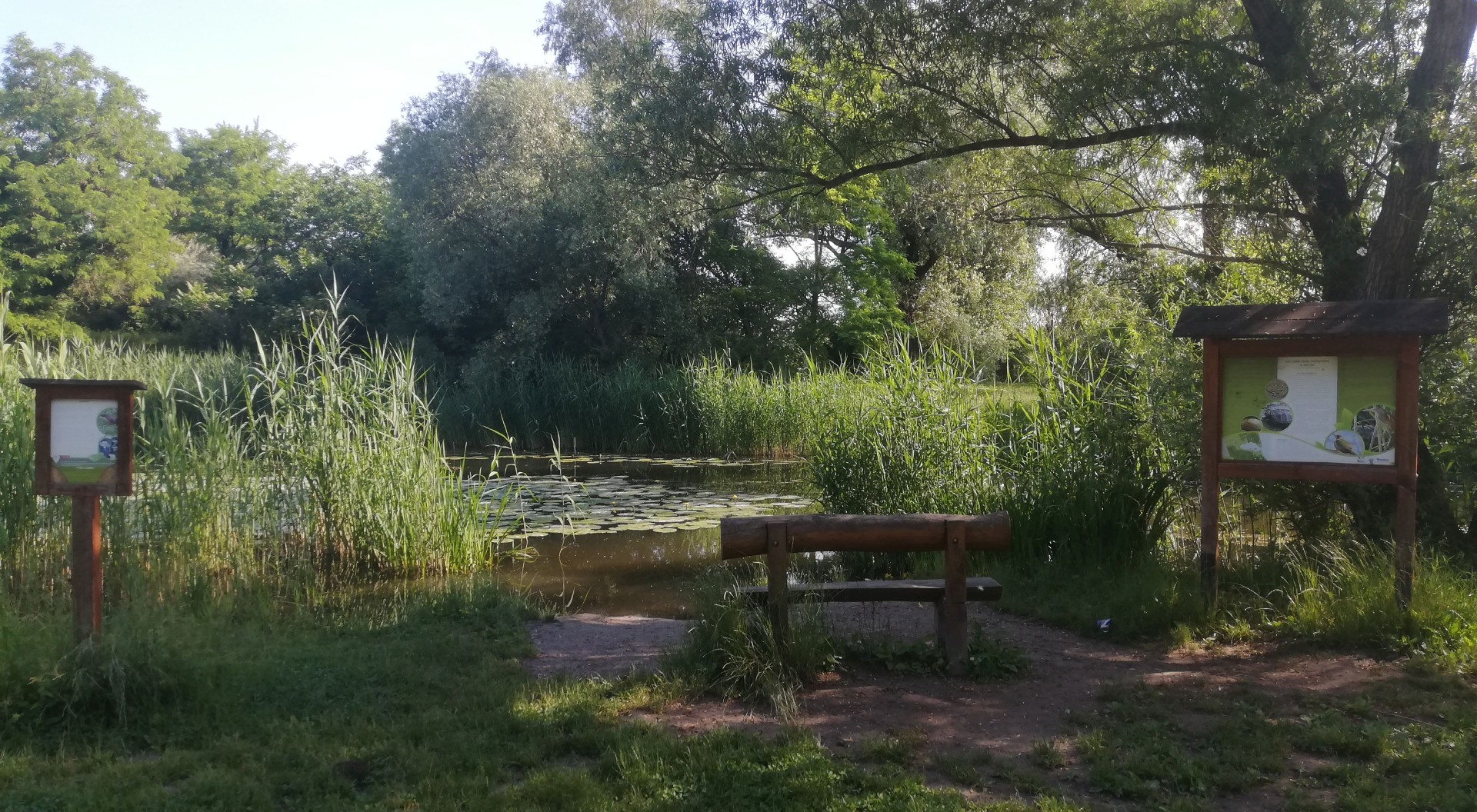 A detail of the Little Danube Bay (Photo: Dávid Palotás/pestbuda.hu)
A detail of the Little Danube Bay (Photo: Dávid Palotás/pestbuda.hu)
The entrance to the park is also a beautifully designed wooden gate.
.jpg)
The wooden entrance gate of the bay (Photo: Dávid Palotás/pestbuda.hu)
If walkers go further, the Csepel Bath can be reached. It is a bit outdated but perfect for a nice dive in the summer. It is worth noting here that in the Ráckeve-Danube, one can swim in the designated places. These are usually public beaches. The Danube branch is not classic river water anyway, it has both ends locked, so it is essentially a large, elongated standing water, through which, of course, water is sometimes passed.
If visitors leave the beach, they will find themselves at the base of the Kayak Canoe Club of Csepel. Here they can see the Kolonics memorial plaque and a little further on the promenade his statue with an Olympic platform. Both are great works of art.
There is a bus stop and a small parking lot at the end of the promenade. Travellers can cross to Molnár Island here with the ferry.
.jpg)
Fresh green leisure park on the hilltop (Photo: Dávid Palotás/pestbuda.hu)
Here, however, the list of beauties that must be visited is not over. Just 500 metres from the Little Danube Bay, it is worth visiting Tamariska Hill. Although it was not so long ago home to military bunkers, today it is a nature reserve and fenced off. It is named after a shrub called tamarisk or salt cedar.
A real rarity: the small hill formed from the deposited sand of the Danube is home to several sand-loving plants in this tiny area. Not surprisingly, a little educational trail guides the visitors around. The hill is also a kind of Calvary, with tasteful wood-carved stations.
.jpg)
Nicely carved stations (Photo: Dávid Palotás/pestbuda.hu)
Unfortunately, tamarisks are no longer easy to find, but if someone is looking for them, they can be found. At the top of the hill, by the way, there is also a rainhouse and several benches, a real bird-chirping paradise for the locals.
%20(1).jpg) The less visible darker green plant is the tamarisk. Unfortunately, the invasive plants have covered the area (Photo: Dávid Palotás/pestbuda.hu)
The less visible darker green plant is the tamarisk. Unfortunately, the invasive plants have covered the area (Photo: Dávid Palotás/pestbuda.hu)
.jpg)
The built attraction of Tamarisk Hill is the carved gate (Photo: Dávid Palotás/pestbuda.hu)
Csepel can rightly be proud of the capital's longest coastal promenade and nature reserves. The well-maintained parks and shorelines make the 21st District attractive. It would not be surprising if more and more people discovered the wonders here because, despite its lowland nature, the noise of the city does not reach it.
Cover photo: A detail of the Little Danube Bay (Photo: Dávid Palotás/pestbuda.hu)

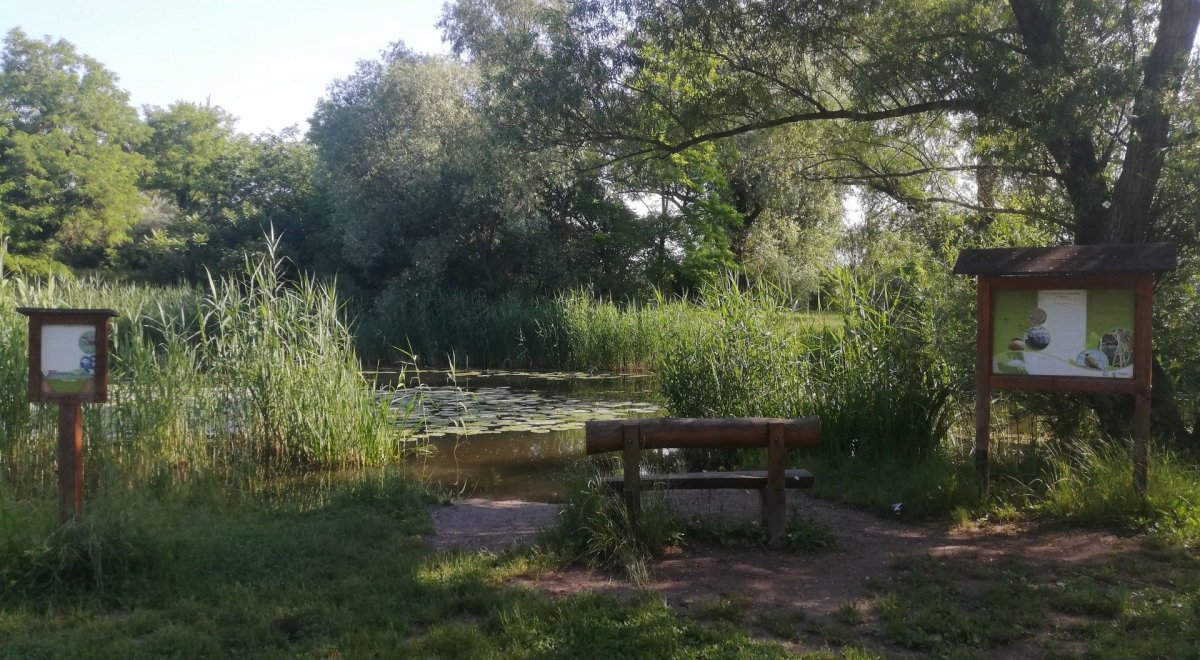
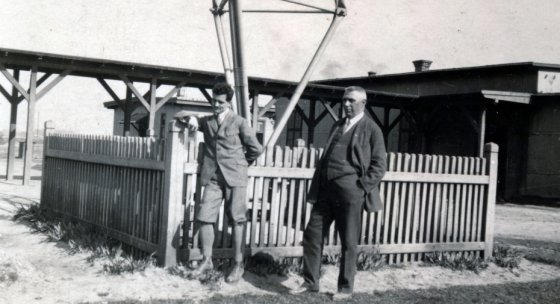
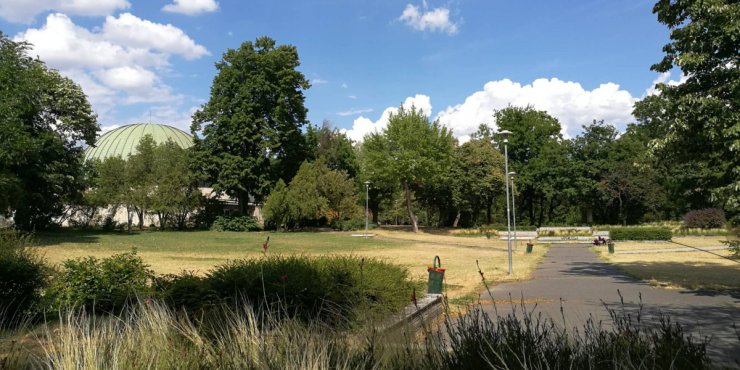
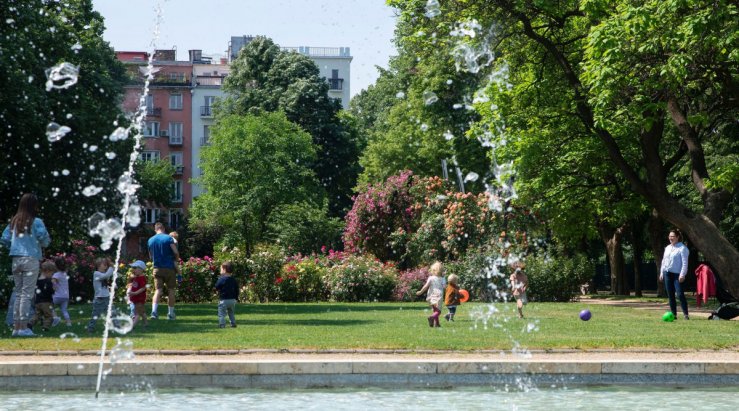

































Hozzászólások
Log in or register to comment!
Login Registration